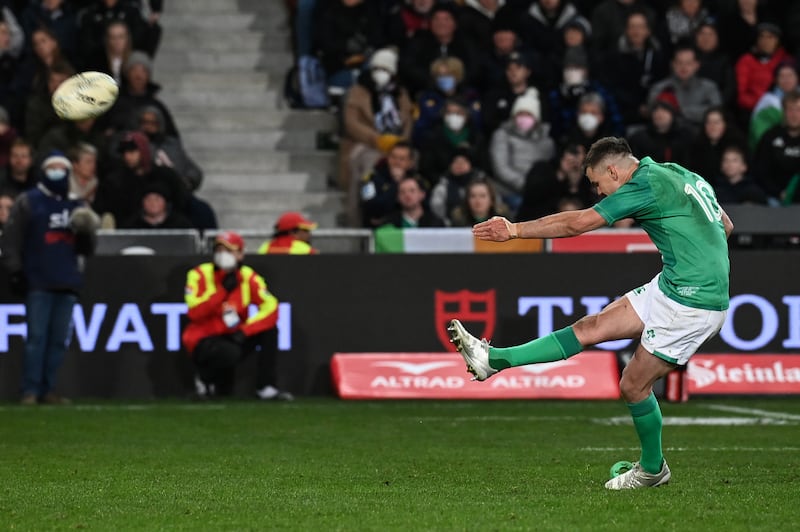When Rugby Australia (RA) scheduled the financially lucrative first Bledisloe Cup match on a Thursday night in the Aussie Rules citadel of Melbourne, the motivation was all about money. AFL followers are more like fanatical members of a religious cult than sporting supporters. They reject all other oval ball codes as blasphemers.
So the Wallabies visiting the rugby heathen in Melbourne was never about mass conversions to the game they play in heaven.
As hosts of the men’s World Cup in 2027 and women’s World Cup in 2029, RA are attempting to entice the AFL folk to fork out some Aussie dollars and think about placing bums on seats at the games later this decade.
To market the Wallabies to the wider Australian audience, Thursday night provided a media window in a weekend that is saturated with the National Rugby League and the Aussie rules semi-final play offs. If the Bledisloe match was played on Friday night, Saturday or Sunday the Wallabies would be going head-to-head with both the NRL and AFL, so rugby in Oz would not have got a mention.
READ MORE
The bold decision to schedule a Thursday evening match in AFL’s heartland was rewarded with a sold out Docklands Stadium.
It was bitterly disappointing for rugby in Australia, which continues to fight for its existence, that once again horrific officiating dominated the star players of a match where both teams were giving their all to play positive running rugby.
With unjust decisions on sin bins, ugly inconsistent penalties and despite talking all night to every player, why in the final 60 seconds with Australia leading, referee Mathieu Raynal did not tell Bernard Foley to kick the penalty into touch or it will be classed as time wasting, will rank as one of international rugby’s most infamous moments of fastidious refereeing with zero feeling for the match.
I can only imagine the total frustration of Wallabies coach, Dave Rennie who was forced to select the 33-year-old outhalf Foley. After four seasons in Japanese club rugby, Foley was parachuted into the starting team.
He has had a long and distinguished career in Super Rugby, winning a championship with the Waratahs, as well as being a World Cup finalist with the Wallabies in 2015. He is deeply respected in Australia but his best days were thought to be in the past.
To his great credit, Foley’s flawless goal kicking kept the Wallabies in touch although his offload to Pete Samu for what appeared like a winning Australian try was more forward than a Tom Brady pass in American Football. While the incomprehensible officiating decision against Foley for time wasting ruined a great contest, at its heart none of this is about Foley.
The essence of Foley’s selection is how an elite player development system that had produced some of world rugby’s greatest ever creative players simply ceased to function.
The lineage of the gold number 10 jersey carries some all-time great names such as Mark Ella, Michael Lynagh, Stephen Larkham and Matt Giteau. With a raft of hugely talented players like David Knox, Pat Howard and Kurty Beale playing their part, a creative attacking Wallaby “five eighth” - as outhalves are called in Australia - was taken as a birthright. This year at outhalf the Wallabies have selected the ageing Quad Cooper (34), James O’Connor (32) and the desperate hope for the future, Noah Lolesio (22).
Somewhere in the labyrinth of failed decision making and disastrous leadership in the ruinous decade after hosting the 2003 World Cup, the philosophy and superb technical coaching that drove the education of so many great five eighths was dismantled by foolish decisions from small minded administrators within Australia’s own system.
Across the ditch in New Zealand, the exact opposite was taking place.
After the great kicking “first five” Grant Fox had passed his black number 10 jersey onto the brilliance of Andrew Mehrtens, New Zealand rugby made a conscious decision to focus on educating their outhalves in the technical and tactical specialties of the position.
As their failure at that 2003 World Cup was still burning in Kiwi hearts, Dan Carter pulled on his black jersey and revolutionised New Zealand’s attacking play. Running, passing, taking calculated risks and attacking from deep, Carter was fantastic.
As Aaron Cruden emerged as Carter’s dependable wing man, New Zealand rugby grabbed the Wallabies mantle as the world’s greatest attackers and entertainers.
Having been nurtured in an excellent Australian system for almost 40 years as both a player and coach, I write these words with real sadness
The Kiwi production line, now in full flow, then created Beauden Barrett. With Damian McKenzie as a highly talented back up, they took their running game to another level. Today Richie Mo’unga has arrived as a mature international with electric speed, footwork, vision and supreme skills.
At the same time Rennie as the Australian coach is being forced to delve back into history and select players whose best days are behind them.
This situation was entirely created by New Zealand adopting a national playing and coaching philosophy while simultaneously Australia actively attacked their own, to the point that their national coaching philosophy has gone the way of the Tasmanian Tiger.
Some claim that there have been sightings of it, but for all practical purposes it is extinct.

This should be front and centre of Irish rugby minds as Johnny Sexton enters his final season. Since November 2021 we have witnessed an Irish team playing with a national philosophy for the first time. The success has been exceptional.
The foundation of this system depends on high quality rugby education being delivered to players below the professional level. At this vital stage of a players development, coaches are teachers and mentors for tomorrow’s internationals. It is at this level that New Zealand and Ireland have succeeded while Australia has failed.
Having been nurtured in an excellent Australian system for almost 40 years as both a player and coach, I write these words with real sadness.
Before next year’s World Cup Ireland must hope for the best and that Sexton remains healthy while planning for the worst, that the 37-year-old might sustain an unwanted injury.
While Ireland’s outhalf situation is far healthier than the Wallabies, who should be Sexton’s short term replacement and his long term successor remains unclear.
Joey Carbery’s attacking organisation against top quality international opponents remains highly questionable while the selection of Ciaran Frawley to tour New Zealand and now with Ireland A to South Africa tells us that he has the opportunity of his rugby life placed in front of him.
Unlike Jack Carty, Ross Byrne, Billy Burns and Harry Byrne, Frawley needs to grab the chance with both hands. At six foot three and 98 kilos, if Frawley had stayed in Sydney, where he was born, he may have been running out wearing the gold number 10 in Melbourne last Thursday.
This November, Ireland need to select outhalves, keeping New Zealand’s 2011 World Cup crisis in mind. On the day of the 2011 final in Auckland, both Dan Carter and Aaron Cruden were injured. Stephen Donald was called back from a fishing trip to play in the decider. The years of quality coaching and past opportunities to wear the black jersey had educated him for his mission. He kicked the goal that won the William Webb Ellis trophy.
Ireland should consider the history of outhalf development in both Australia and New Zealand. Then plan to be like New Zealand, or fail to plan and end up like Australia.

















